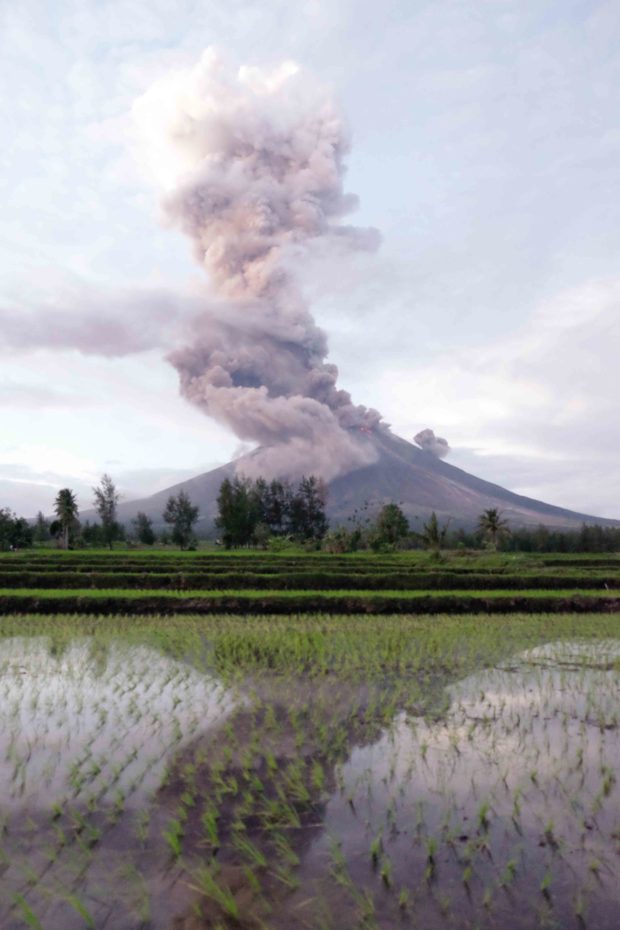Gov’t offers Mayon evacuees livelihood training program

An image of Mayon spewing ash and pyroclastic materials is reflected on a farm in the village of Busay in Daraga town, Albay province. The country’s most active volcano continued to show signs of unrest and residents around danger zones had been told to flee. Authorities had raised Alert Level 4 in areas around the volcano, prohibiting entry into a 7-8 kilometer danger zone. —NIÑO JESUS ORBETA
Starting on Monday, the Technical Education and Skills Development Authority (Tesda) would provide livelihood training programs to Mayon evacuees to help them earn a living away from their homes.
According to Tesda Director General Guiling Mamondiong, at least five training programs would be held at San Francisco Elementary School and Malilipot Elementary School, which had been turned into evacuation centers next week.
Mamondiong said one of the programs would teach 25 evacuees how to make face masks, which would be distributed to fellow evacuees, policemen and soldiers deployed to the area.
3,000 evacuees
There are currently 3,000 evacuees at the two schools, mostly from the villages of Calbayog, San Roque and Tugawe.
Article continues after this advertisementOther training programs would be on manicure, pedicure, massage and bread-making which Tesda said could keep evacuees busy and earn their keep even if they were holed up in evacuation centers.
Article continues after this advertisementThe initial damage wrought by Mayon volcano on the Bicol region’s agricultural sector has now reached P1.56 million, according to a report by the Department of Agriculture (DA).
Vegetable farms suffered the heaviest damage with estimates reaching P1 million. More damage reports were expected from areas hit by ashfall.
Initial damage report
The DA report said at least 42 metric tons of crops were destroyed and 112 hectares of farms were hit. At least 141 farmers were now facing income losses.
Among the vegetables that were destroyed were bitter gourd, beans, eggplants, okra, string beans, sayote, chilies, tomato and “upo” (bottle gourd).
The region’s abaca industry also suffered a hit with losses estimated to be worth P478,000.
DA officials continued to evacuate livestock animals within the 7-8 kilometer permanent danger zone around Mayon. A total of 167 animals had been removed from harm’s way.
During natural calamities, the DA said it was prepared to give out loans to farmers and fishermen.
Under the survival and recovery loan program, they can avail of grants worth P5,000 for immediate aid and at least P20,000 which they could use as starting capital. —With a report from Karl R. Ocampo